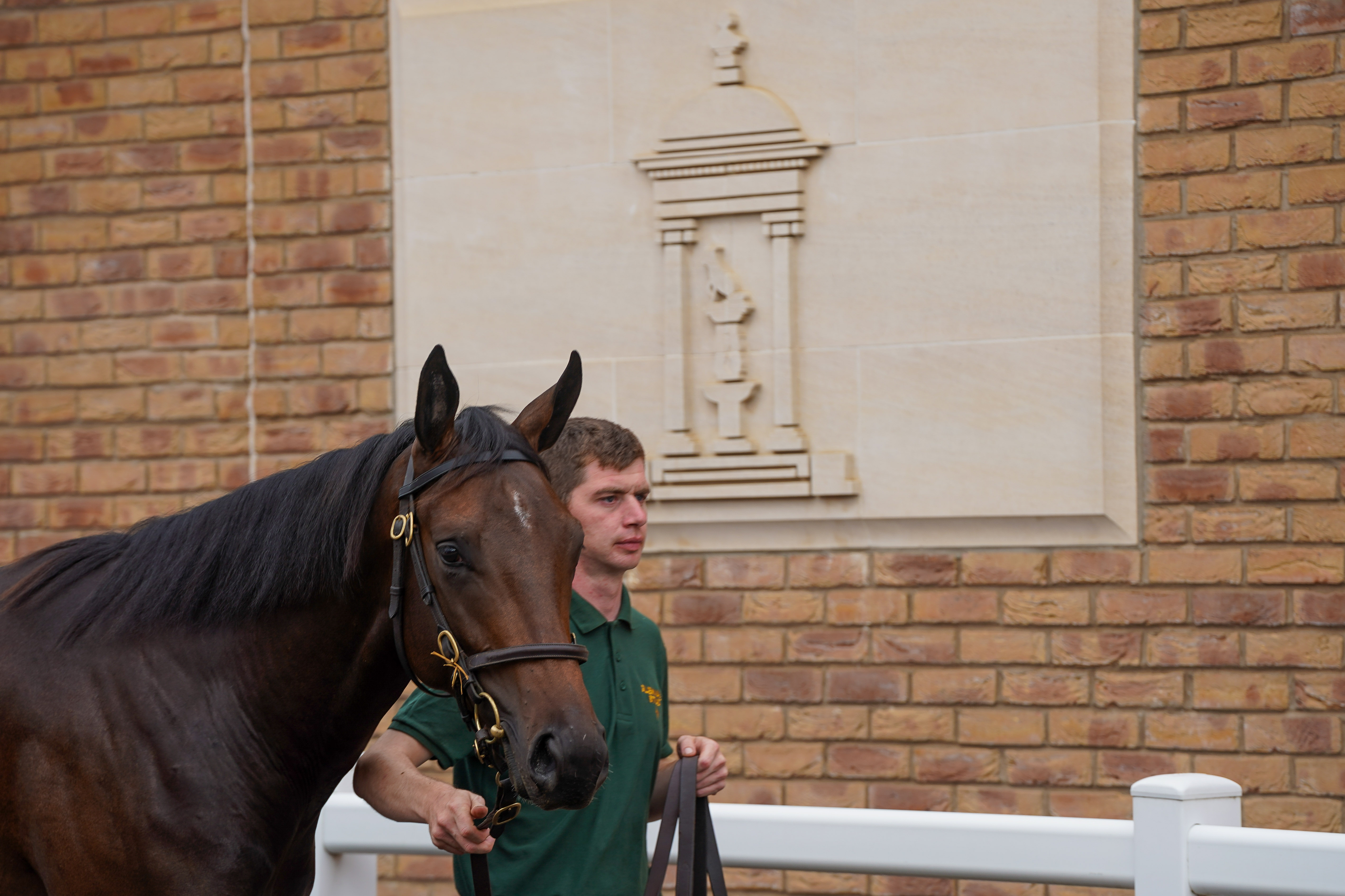
4 minute read
TED TALKS...
Maybe breeders should take the initiative?
SALES OFTEN READ differently than they feel, and the select yearling sale at Tattersalls was one such sale.
Many anticipated a downturn following the fairyland sale last year, but it was more that just lowering of averages and medians – a whole section of the market disappeared.
The bread and butter of a mainstream sale is the middle market in which yearlings make their sires’ average.
Tattersalls Book 1 was comprised of 500 yearlings and not all are by the ultra-select sires, with many a mixture of nice horses by sires who trainers or small British owner can afford, as well as the ever-increasing number of syndicates.
They compete for a Book 1 bonus, which makes for a great sales pitch for the discerning syndicate owner.
The top of the market is ringfenced by sires and numbers. Roughly 150 horses fall into this bracket, which involves a select group of sires – currently Frankel, Dubawi, Kingman, Lope De Vega Siyouni, Wootten Bassett and No Nay Never. There are a couple of periphery sires such as Havana Grey and New Bay, but, basically, that’s it.
In the spring each year breeders and farms are visited by Tattersalls inspectors armed with pedigrees already graded with potential sales in mind.
The physically border-line Book 1 horse either stays in Book 1 or gets a Book 3 place, while a good Book 3 physical can get a Book 1 place. The most difficult sale to get into is October Book 2.
Some of the yearlings by lesser stallions with great physicals take their chances in Book 1.
Book 1 is made up of only around 150 yearlings who could be considered good enough for Godolphin, Coolmore or Shadwell.
The Bahrain Royal family through Oliver St Lawrence, and the Qatari Royal family through Richard Brown, are two other buyers of scale who are worth mentioning, as well as AMO Racing and Mike Ryan.
Several things happened this year.
Last year’s big spender Sahleh Al Homaizi was obviously not around, and this left a 10 million guineas deficit, although the eight million that appeared from Richard Brown was new so, in theory, most of that was replaced.
Godolphin spent 12 million guineas, half of the team’s outlay in 2022, and this was the biggest change.
It is difficult to compare crops of yearlings, but my general feeling is that this year’s yearlings lacked something of a superstar quality.
Many of the big spenders have yearlings they have bred themselves so have comparisons at home, which influences whether or they feel the need to purchase additional yearlings, especially if they think they have better at home.
AS ALWAYS it is a supply and demand equation. This year the demand was reduced for the select yearling and the middle-market didn’t have enough purchasers who had an overriding need to buy a yearling.
The dreaded “Book 1 curse” felt at all select sales only survives because breeders roll the dice by putting yearlings in the sale who perhaps should be sold in a later book.
It was also evident that many of the breeders selling are leading owners who were offering yearlings in order to reduce the numbers that they have to put in training.
I found most breeders, who do race at the highest level, fared badly except Hascombe. The farm offered (and sold) all of its yearling colts rather than trying to pick and choose what they would race and what they would sell. The market just didn’t want to second-guess breeders’ selection processes.
Finally, we always suggest to Tattersalls how they should alter the sale to make it stronger and give it more depth.
Much of the chat that swirled around the sales paddocks was advising that the company should look after potential purchasers in a similar fashion to Goffs and Arqana by flying in more American buyers.
But I believe, ultimately, it’s the breeders, who as vendors could alter the format of Book 1 by either not offering those middle-of-the-road physicals, or those horses by middle-of-the-road stallions.
If we didn’t enter these two categories into the first book, then Tattersalls would only have a 200-horse sale in that section.
Vendors can mould the content of the sale themselves – and Tattersalls has the facility to accommodate and one that is constantly improving.
One last anecdote from a leading buyer of yearlings in Book 2.
That person commented that it is easier to let the breeze-up guys select the yearlings from Book 2 and buy from them in the breeze up sales – they are so much better at picking out the racehorses at yearling stage than many agents are. How times have changed!









